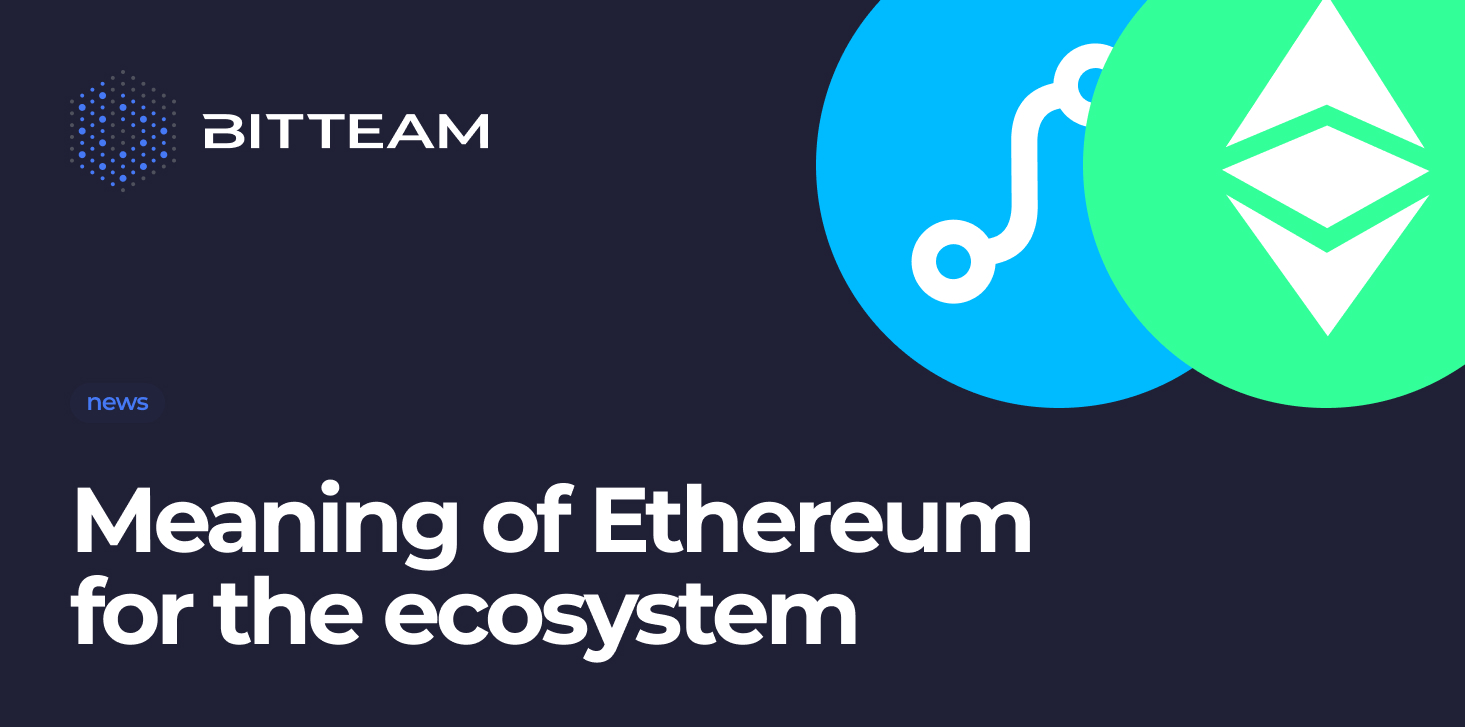The transition to proof of stake in Ethereum is scheduled for August
According to the data provided by Coinmarketrate.com Ethereum is the second largest cryptocurrency after Bitcoin and, thanks to its first-level blockchain, represents the majority of smart contracts and DeFi projects.
In general, almost 60 percent of the total value blocked in DeFi projects is on the Ethereum blockchain.

Distribution of the total value blocked between different blockchains. Source: DeFi Pulse
Absolute security and implementation of the transition with as few complications as possible is an absolute priority for the developers behind Ethereum. Hence the justified and understandable delay in the implementation of the project.
Accordingly, the so-called “Complexity Bomb” will be activated in the blockchain, which will make the initial mining as a Proof-of-Work consensus mechanism process extremely difficult. Once implemented, the bomb exponentially increases the complexity of the puzzles that need to be solved for proof of work, which will eventually make mining impossible.
The implementation of the “Complexity Bomb”, which has already been postponed several times, will be carried out in August, as planned, provided that no new types of problems arise.
Update Merge (Merge)
The goal is for all or most of the network operators, i.e. the so-called miners, to switch to the Proof-of-Stake consensus mechanism and act as validators. After activating the “Complexity Bomb”, this is the only way to remain a profitable network operator. After all, without a switch, the creation of new blocks slows down many times, and sustainable profitability for network operators becomes impossible.
After the developers have already integrated the main functional changes into the blockchain, it was announced that the Ropsten test network will be created on June 8. Here, the network adjustments will be tested to make sure they work completely correctly, and errors, inaccuracies and aspects that have not yet been taken into account will be noted so that everything goes smoothly for a proper launch.
Advantages of the Ethereum Merger
Thanks to this transition, the so-called Beacon Chain will divide the Ethereum network into various independent chains, the so-called shredded chains. As a result, the Ethereum blockchain will constantly benefit from an increase in network bandwidth, that is, the ability to process more transactions simultaneously. Due to scaling, the transaction time for individual blockchain users is naturally reduced, which significantly improves the user experience.
In addition, the Merger makes the Ethereum blockchain much more environmentally friendly. To participate in the Proof-of-Stake system, stake holders do not need energy-intensive computers with appropriate video cards, but a regular home computer or smartphone is enough. This makes Ethereum better for the environment.

A brief description of the advantages of switching to Proof-of-Stake. Source: Ethereum Labs
In addition, the owners of the ETH cryptocurrency can use their coins to ensure the stability of the network without having to invest large amounts of money in equipment as an additional investment, as in the case of Proof-of-Work.
Potential impact on the price of ETH
More and more companies and investment firms are interested in entering the crypto industry. MicroStrategy, whose CEO is Michel Saylor, has been consistently accumulating BTC since August 2020. Major investment banks such as Blackrock are also interested in providing their clients with products investing in cryptocurrencies.
An essential aspect in this context is the assessment in accordance with the so-called ESG criteria – Environmental Social Governance (Environmental, social and corporate Governance).
Accordingly, the upcoming transition to the proof-of-stake mechanism can certainly be considered as a positive factor for the overall willingness of ESG supporters to invest in the Ethereum project. In the long term, of course, this is an important step for the inflow of “big money”, that is, money in very large amounts invested by institutional investors.
Chart analysis and forecast for ETH
On the Ethereum chart, we see that after the recent collapse, ETH tested the level of 1,775 US dollars. These are price levels since June 2021, and, consequently, the cryptocurrency has received an updated upside (expectation of growth), in the form of the found purchasing power of the support level.
In the long term, Ethereum has managed to establish a very strong uptrend, which still persists despite the sell-offs of recent weeks.
At the time of writing this article, ETH at the end of the last 7 weeks, the asset was trading lower than at the beginning – this has never happened before. The Relative Strength Index (RSI) is also trading at 35, which was last recorded more than two years ago, in March 2020.

The price of Ethereum in the long term on the 1-week chart. Source: TradingView
Summing up, we can say that a recovery rally is quite likely over the next few weeks.
However, ETH, like all other cryptocurrencies, is likely to have a hard time in the medium term due to prevailing macroeconomic factors.
